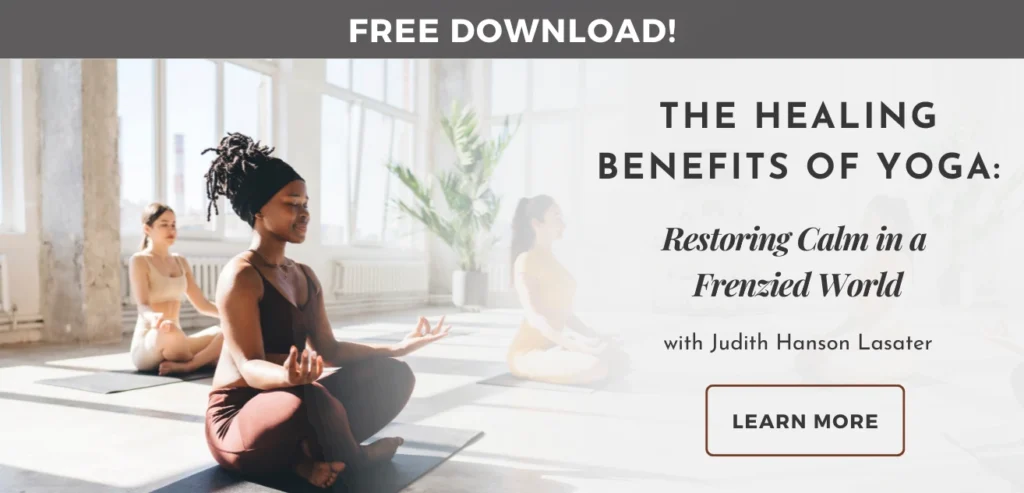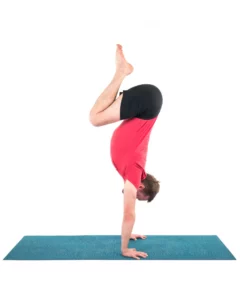Redefining Full Expression of a Pose

How do you feel about “full expression of a pose”? Have you ever felt inadequate because you can’t do the “full expression” of a pose or felt less-than because you use props and modifications?
If you think about the phrase “full expression,” doesn’t it imply that anything else is not good enough? And when teachers discuss working toward that “full” expression, isn’t it natural to assume that should be our end goal?
Full Expression of a Pose: Is it Yoga or Competitive Sport?
The fact is, the idea of the “full expression” of poses is a very new and arbitrary construction. The foundational yoga texts don’t lay out any of the poses, much less order us to get our feet behind our ears. Frankly, until much more recently, āsana was a seat for meditation.
Of course, we use āsana in a broader way now, and that’s fine. But shouldn’t we align it with yoga’s teachings and not with a competitive performance sport?
Is There a “Right” Way to Practice Any Yoga Pose?
When teachers tell us that one way to practice yoga is inherently “right,” that pulls us into the exact sort of false binary that yoga is meant to help us reject, getting us hung up on the specifics of our physicality rather than focused on our spiritual progress.
Plus, this approach excludes so many people since most people can’t do the “full versions” of most poses, even with time and dedication. Not to mention, encouraging people to move beyond range and to continually push further carries significant risks.

Reframing Our Yoga Practice
How about we reframe how we look at poses and remember that the version that is safe and sustainable for us is the right one? We can ditch the judgment by shifting our focus to the intent of a pose, whether it is to energize us, relax us, or stretch our hamstrings.
The Yoga Sutras of Patanjali lists only three sutras that pertain to asana (Alistair Shearer’s translation):
- 2.46: The physical posture should be steady and comfortable.
- 2.47: It is mastered when all effort is relaxed, and the mind is absorbed in the Infinite.
- 2.48: Then we are no longer upset by the play of opposites.

According to the sutras, mastery has nothing to do with “full expression” or accomplishing fancy poses. It’s about relaxing effort and being present with whatever pose you’re practicing right now.
So when we’re teaching, we need to adapt our language to present equally valuable options for students to explore while reminding them that no one approach will work for every body.
How do you feel about the line often used to describe the “full expression of the pose”?
Also, read...
Teaching Svadhyaya: 3 Ways to Encourage Self-Study in Yoga
In Celebration of Gray-Haired Yoga – Busting the Myth of the Yoga Body
Related courses

Alexandria is an internationally respected teachers’ teacher who leads teacher trainings and workshops around the world. Through her Yoga Physics methodology, she aims to clearly explain the what, why’s and how’s of asana, meditation, and yogic philosophy making the practice approachable for everyone, of every level, and of every walk of life. She shares this knowledge with her students and other teachers so they can practice and teach wisely, sustainably, and mindfully. Her in-person continuing education workshops and online DeConstruct to ReConstruct anatomy course, Yoga Student Training philosophy course, and D2R: The Business of Yoga, train teachers to be better informed on yogic philosophy and history, the physical mechanics of the body and how to apply that knowledge to asana, how to ethically lead group classes that are accessible and sensitive to all, and how to run a successful yoga business that’s rooted in yoga’s teachings. Her Yoga Physics mentorship program is helping teachers build on their strengths while discovering their own unique voices.



